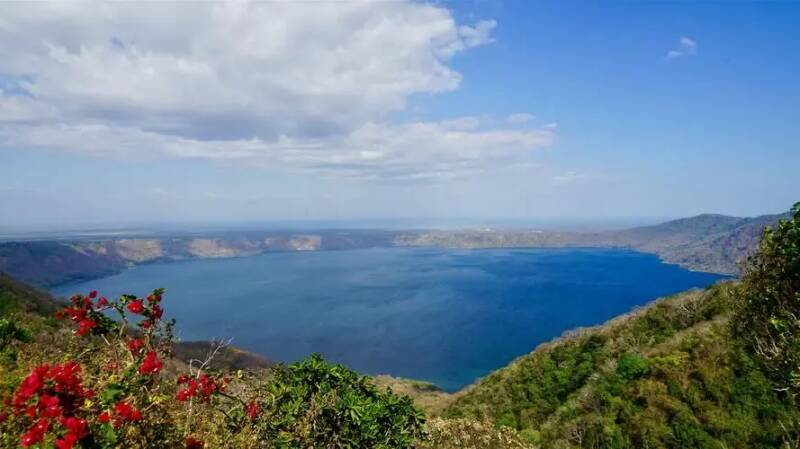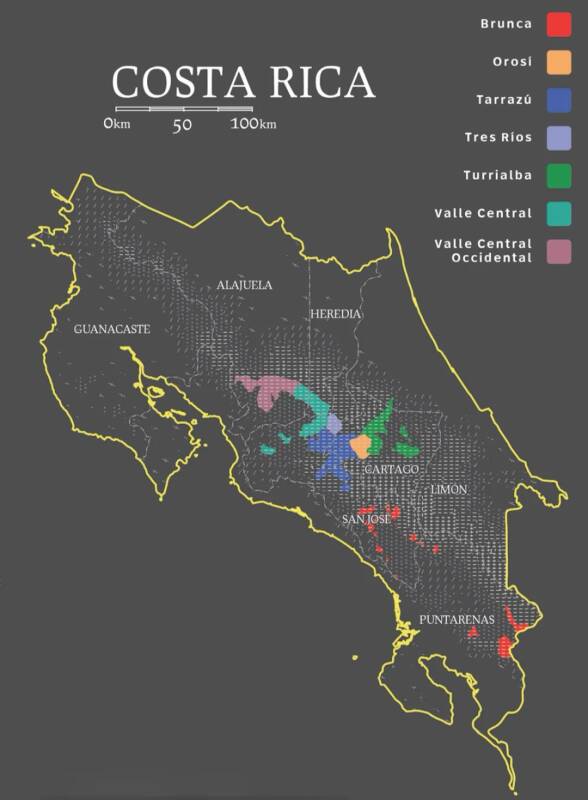Costa Rica| Introduction to Tangka Yiyuan Manor in Talazhu Production Area
In Central America, because it is located in the coffee growing belt, there are many countries that grow coffee, including many well-known coffee producing countries, such as Guatemala, Honduras, Panama, Costa Rica and so on. Costa Rica is the 14th largest coffee producer in the world and the first country in Central America to grow coffee.
Costa Rica Costa Rica
Costa Rica is located in the Central American Strait, the southernmost tip of North America, bordering Nicaragua and Panama, the Caribbean Sea to the east and the Pacific Ocean to the west, with a coastline of 1290 kilometers. The coast of Costa Rica is surrounded by plains, the central part is cut off by rugged mountains and has more than 200 volcanoes.

Costa Rica has a tropical and subtropical climate, with annual rainy seasons (April to December) and dry seasons (late December to April of the following year). With mild temperatures, abundant Rain Water and volcanic ash rich in minerals in the soil, Costa Rica has become an important global exporter of pineapples, bananas and coffee.
Coffee producing area
There are seven coffee producing areas in Costa Rica, namely: the Western Valley (Valley Central Occidental), the Central Valley (Valley Central), the Tarazu (Tarrazu), the Sanshui River (Tres Rios), Orosi (Orosi), Brunca (Bronka) and Turrialba (Duli Alba). Almost all of these areas are distributed in the central mountains.

Tarazu (Tarrazu): the Tarazu producing area is the largest and best-known producing area in the country, located in the province of San Jose, but it was originally called Los Santos Los Santos, which includes the administrative areas of Tarazu Tarrazu, Duota Dota and Leon Corks Leon Cortes Castro.
However, because the Tarazu became famous earlier in the region, the Costa Rican government registered the coffee origin name "Caf é de Tarraz ú" with the European Union and the World intellectual property Organization (WIPO) in 2019, so people are used to dividing the coffee producing areas into major categories by "Tarrazu". The area is affected by warm and humid air currents in the Pacific, with annual rainfall of 2400 mm and an average temperature of 19 ℃, and coffee is grown at an altitude of 1500m to 2100m.
And at the Excellence Cup COE in Costa Rica, most of the award-winning estates are from the Tara Pearl producing area. The one with the highest score of 93.62 on COE this year is Don Cayito, which is from the Tarazhu region.
Thangka relying on Manor (Don Cayito)
The coffee trees in Don Cayito are mainly grown in the Santa Maria de Dota area of the Tarazu region. Coffee is grown on slopes 1650-2100 meters above sea level in the region, which protects crops from Atlantic weather, but allows sea breezes in the Pacific and is sunny during the day.
The estate, currently managed by Luis Ricardo Calder ó n Madrigal and his family, has 6 hectares. In fact, Luis, the owner of the estate, took over the 4-hectare La Estrella from his father in 1998, opened a micro-processing plant in 2009, and won the championship of COE in 2011, which made his family stand out in the international market.
After that, it bought Tangkatu Manor in 2016 and named it after itself. it now grows iron pickup Typica, Kaddura Caturra, Kaduai Catuai, SL28 and Rosa Geisha. With years of planting experience, he won the championship in 2018, 2022 and 2024 respectively in COE's record.
Important Notice :
前街咖啡 FrontStreet Coffee has moved to new addredd:
FrontStreet Coffee Address: 315,Donghua East Road,GuangZhou
Tel:020 38364473
- Prev

Lucky co-branded TV series "The Story of Rose", Liu Yifei's same keychain was stolen!!
▲ Click to pay attention| Daily Boutique Coffee Culture Magazine Coffee Factory Recently, the TV series "The Story of the Rose" was popular, and Lucky also took the opportunity to catch up with a wave of linkage. It is understood that Lucky's joint venture with the series this time is to incorporate the key element of the series,"Yellow Rose". In addition to launching a new drink "Yellow Rose Latte
- Next

What is Caffè Corretto? Why is espresso served with spirits?
'Not long ago, when Front Street was reviewing James Hoffmann's "Guide to Home Coffee Brewing", he saw a somewhat unfamiliar and familiar Italian coffee called Caffè Corretto. It sounds familiar, because Qianjie has heard of this name before, and
Related
- What effect does Italian American coffee with filter paper have? Will coffee taste better if it is put on filter paper at the bottom of the powder bowl?
- What is the color difference in coffee beans? What are the characteristics of honey processed coffee beans? Why are the anaerobically treated coffee beans uneven in color?
- How does novice Xiaobai quickly get started and make coffee? Newbies learn to make coffee by hand and share the specific steps and process process!
- Costa tea has a shelf life of 100 years?! Expert: Unable to verify
- It's a huge uproar! American milk addition was rejected by Manner employees?!
- Mocha pot coffee bean recommendations| How fine and how much powder should be used for grinding? What parameter ratios do I need to use to make milk with Mocha pot coffee?
- What are the characteristics of the world's top ten coffee beans treated with Costa Rica honey? How to make black honey kadura from Tarazhu Pilon Processing Plant taste good?
- How to make deep-roasted coffee? What grinding water temperature does authentic Jamaica Blue Mountain No. 1 coffee use to brew it well?
- Selected high-grade rose summer coffee flavor tasting guide Why Panama rose summer has the aroma of flowers and fruits
- What equipment does a novice Xiaobai need to buy to learn to make coffee? Filter cup electronic scale bean grinder manual flushing pot purchase guide

